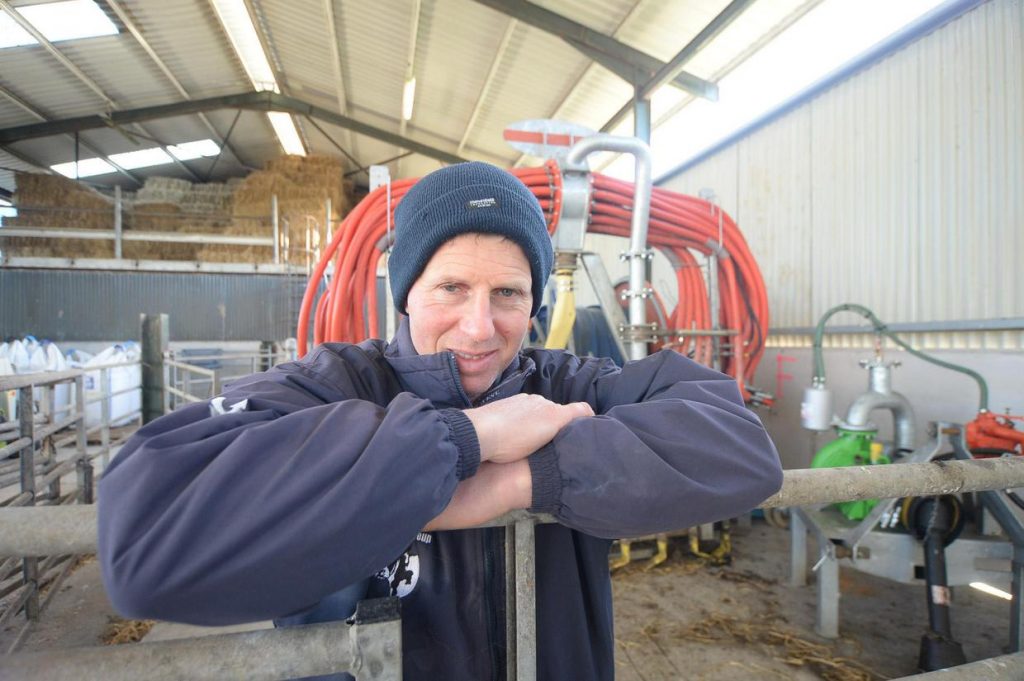
Dairying is his main enterprise, milking 250 cows. He has one full-time hired labour unit, with additional labour supplied by students in spring.
His son Diarmuid, who is in school, helps out with work on the farm.
Dermot farms 113ha and his overall stocking rate is 241kg organic N/ha. The EBI of the herd is €189, while the heifers are €246.
The six-week calving rate is 87pc. The cows produced 467 kg MS/cow in 2020.
Soil type is free-draining. Grass grown on the farm was 13.0t DM/ha in 2020. Soil fertility on the farm is good.
Recording
Dermot is recording all grass measurements through Pasturebase; this is a very useful tool for making grassland decisions, particularly as the stocking rate on the grazing platform and whole farm are high at 3LU/ha, and 2.8LU/ha, respectively.
Facilities are impressive, with a 24-unit parlour, cubicle space for 248 cows, and good grazing infrastructure, all paddocked, as well as decent silage storage.
Dermot’s most significant challenge is to reduce total chemical nitrogen use, while at the same time maintain or even increase grass production.
He reseeded 5pc of the farm this year, using 2kg of clover in the mix. There has been zero nitrogen used on those swards since reseeding, forcing the clover to establish and become effective.
Dermot has tried over-sowing but was unsuccessful, as the farm was hit by drought, but he will look at it again in 2022.
He is concerned about chemical nitrogen price. He will analyse the slurry in January to make informed decisions on how much to spread to get the optimum value from it.
Dermot has his own umbilical system with dribble bar, so all slurry is spread using LESS.
This is a win-win for him, supplying additional nitrogen, giving more flexibility to grazing and reducing emissions.
He used all protected urea this year, bar 12 tonnes of CAN. He has been using it for the last 4-5 years and is very happy with it. He has ordered some straight urea for the spring but will use protected urea in 2022.
The carbon footprint for this farm is 0.85kg CO2-e/kg fat and protein corrected milk, information Dermot gets from his Bord Bia Farmer Feedback report.
He is aiming to reduce the footprint to 0.70kg CO2-e / kg milk by 2025. He is also conscious that reducing the footprint is not enough without reducing total emissions.
Marginal cows
Dermot has reduced cow numbers by 5pc (12 cows) in 2021. These were the marginal cows that were later-calving, and producing the lowest level of kg milk solids within their lactation.
His stocking rate on the grazing platform and whole farm is high. This means that often closing up silage areas can leave the farm stocked very heavily.
Dermot has found that by reducing cow numbers by 5pc, he has taken the pressure off the grazing, and total milk solids supplied in 2021 have remained the same for the farm.
In terms of biodiversity, there are improvements to be made on the farm. Dermot has identified key areas where new biodiversity area can be established, and existing areas can be enhanced.
He plans to plant treelines surrounding the farmyard to reduce ammonia emissions from the farmyard but also add to his biodiversity measure.





























